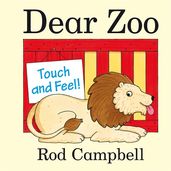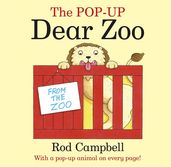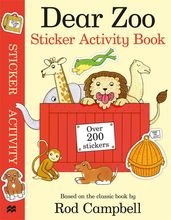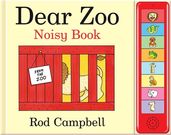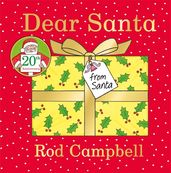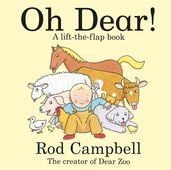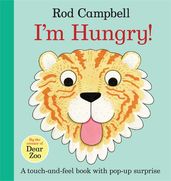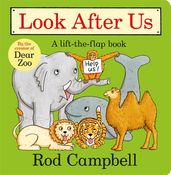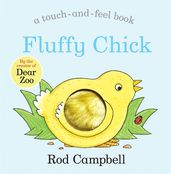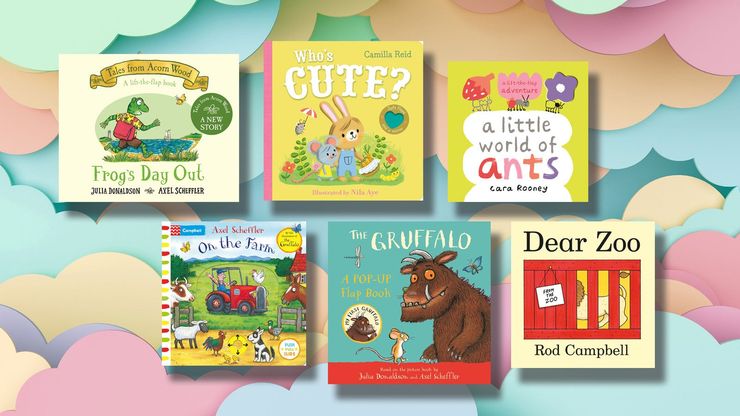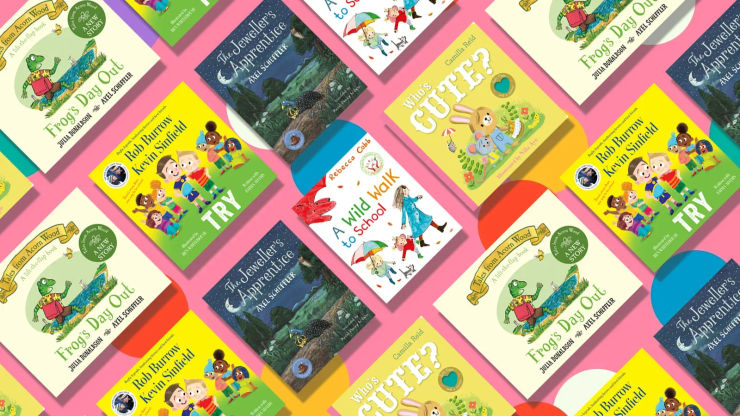Rod Campbell's Dear Zoo books: a complete guide
Our guide to Dear Zoo and Rod Campbell – creator of perfect lift-the-flap and pop-up books for toddlers.
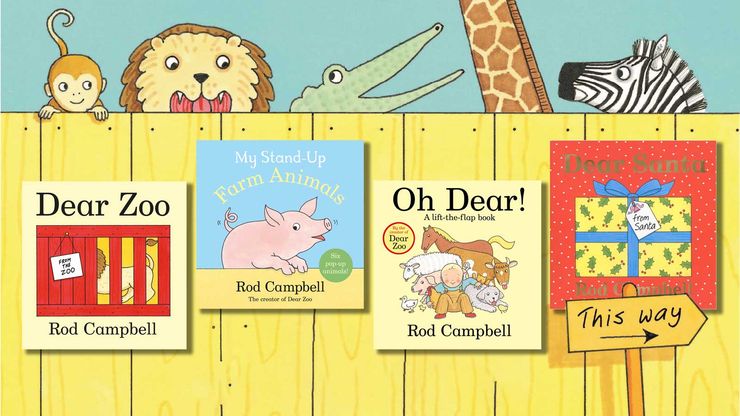
Discover our range of Dear Zoo books and other bestsellers by Rod Campbell, from lift-the-flap and pop-up books, to sticker activity books and festive favourites. Ingeniously simple, with touches of gentle humour, Rod's books are enjoyed by children, parents and teachers alike.
Dear Zoo books
Dear Zoo
by Rod Campbell
'I wrote to the zoo to send me a pet. . .'
The original classic: no child's bookcase is complete without a well-worn copy of Dear Zoo! Young children will love lifting the flaps to discover the animals the zoo has sent – a monkey, a lion and even an elephant! But will they ever manage to send the perfect pet?
Dear Zoo Touch and Feel
by Rod Campbell
Get ready to meet a frog with sticky feet, a snake with a bumpy basket, and an elephant with great big ears – but watch out for the lion's teeth! This wonderful touch-and-feel book brings the beloved story of Dear Zoo to life with a different texture for every animal and colourful artwork throughout.
The Pop-Up Dear Zoo
by Rod Campbell
This interactive pop-up edition retains all the charm of the original story and is packed full of exciting surprises, including a very tall giraffe, a fierce lion and even a very jumpy frog.
Dear Zoo Sticker Activity Book
by Rod Campbell
Toddlers will be busy for hours with this fun activity book which comes with over two hundred stickers! It's packed full of activities, colouring-in and games which are specially designed for preschoolers. Match the zoo animals to their shadows, complete sticker jigsaws, patterns and more – perfect for holidays, birthdays and rainy days.
Dear Zoo Noisy Book
by Rod Campbell
An interactive edition of the preschool classic, young children will love lifting the flaps to discover the animals the zoo has sent, and then pressing the sound buttons to bring the story to noisy life: hear the lion roar and the puppy bark!
Dear Zoo Buggy Book
by Rod Campbell
Even the very youngest Dear Zoo fans can discover all their favourite animals from the original story. An elephant? Too big! A giraffe? Too tall! A puppy? Perfect! What will the zoo send you? Use the handy strap and clip to attach this sturdy board book to your buggy and take it with you wherever you go!
More from Rod Campbell
Noisy Farm
by Rod Campbell
Join Sam the farm dog for a day on the farm to meet lots of animals and their babies. Don't forget to join in by calling out their noises!
My Stand-Up Dinosaurs
by Rod Campbell
Young children will love finding out about all their favourite dinosaurs in this clever pop-up book. Just open up the book to see a different dinosaur stand up in the middle of every spread, then lift the flaps to find out lots of fascinating facts about them. With easy to use and brilliantly satisfying pop-ups, fun facts, bright and bold illustrations and lots of favourite dinosaurs, My Stand-Up Dinosaurs is perfect for little dinosaur fans.
Dear Santa
by Rod Campbell
A seasonal favourite, this Christmas adaptation of Dear Zoo is sure to delight young readers just as much. Will Santa send the perfect present in the end? With gold foil cover, flaps to lift on every page and a touch-and-feel surprise ending, this is the ideal Christmas gift or stocking filler for preschoolers.
Dear Santa Sticker Activity Book
by Rod Campbell
Toddlers will be busy for hours with the Dear Santa Sticker Activity Book, full of Christmas-themed activities, colouring in and games that are specially designed for preschoolers. Join in the festive fun with matching games, sticker shadows, patterns and more – perfect for keeping little ones busy at Christmas!
Oh Dear
by Rod Campbell
Buster's staying with Grandma on the farm. But where will he find the eggs for breakfast? Not in the stable – oh dear! Young children will love lifting the flaps as they turn the pages and follow Buster around the farm.
The Boo Zoo
by Rod Campbell
At the Boo Zoo the animals like to play Boo! Do you want to play too? Toddlers will love opening the large fold-out flaps to reveal the favourite zoo animals behind each one – then say 'BOO!' With bright, colourful artwork, a catchy repeated refrain and a whole host of favourite animals to meet, little ones will love lifting the large card flaps to play peekaboo with all the animals at the zoo.
I'm Hungry
by Rod Campbell
This fun animal story is sure to delight young children, with touch-and-feel patches, flaps to lift and a surprise pop-up ending. The hungry mouse likes eating cheese, the rabbit likes carrots and the monkey likes bananas – but what about the hungry tiger? Are you brave enough to turn the page and find out?
Look After Us
by Rod Campbell
Look After Us is the perfect first book to start talking to very young children about wildlife conservation. Lift the sturdy card flaps to discover five different endangered animals in their natural habitats, and unfold the special ending to learn how conservation efforts have helped whales, to introduce the importance of looking after our world and the animals that live in it.
Fluffy Chick
by Rod Campbell
A touch-and-feel springtime story. Follow Chick around the farm and meet all her animal friends: stroke the woolly lamb, feel the cow's smooth horns and then lift the flap at the end to find out who is hiding under mother hen's wing!
It's Mine
by Rod Campbell
Can you spot all the animals? Packed full of favourites, including a tiger, elephant and giraffe, toddlers will love turning the sturdy card pages to find out who is hiding in the jungle in this hide-and-seek story.

